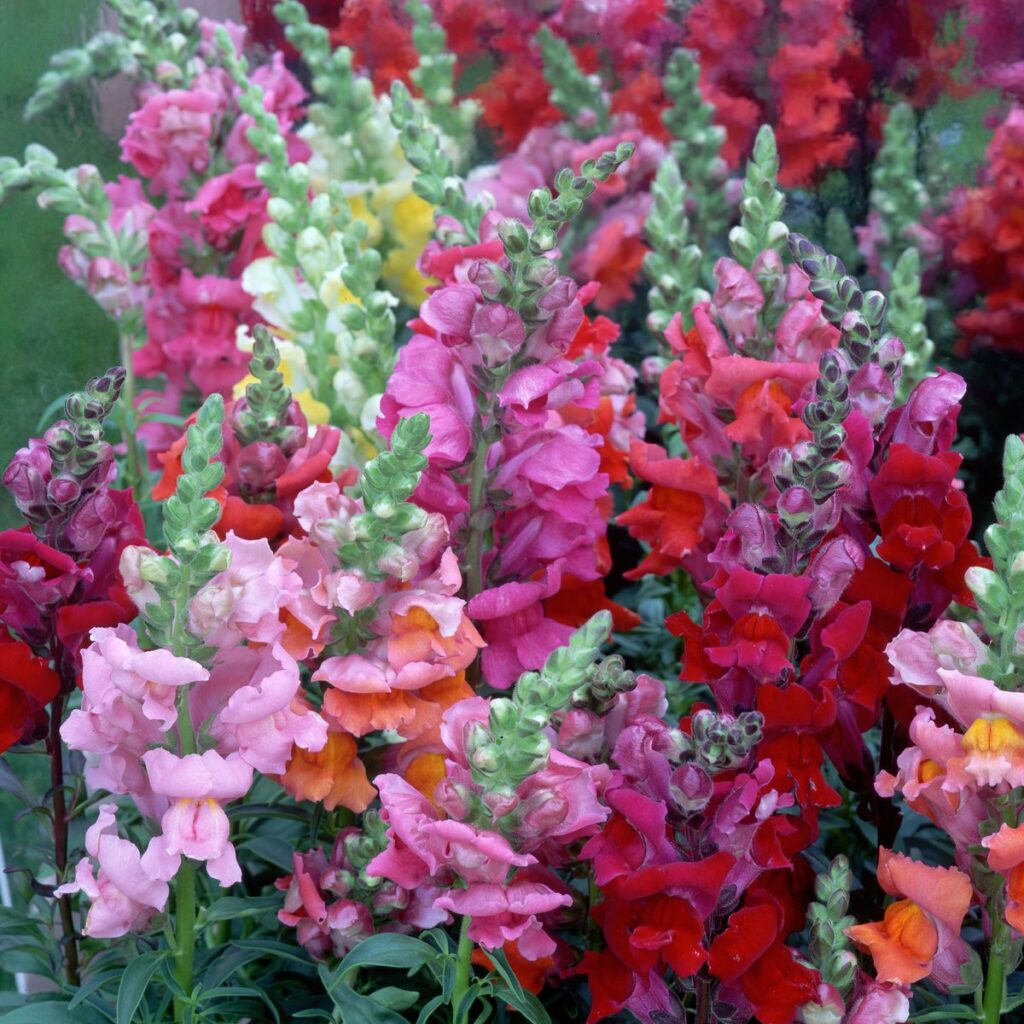One of the prettiest and cheeriest blooms around, December is one of the best times to learn how to grow snapdragons. There is not much you can start growing at this time of year, but you can sow this cottage garden staple undercover in winter.
While many people grow them as annuals or biennial plants, snapdragons are, in fact, short-lived perennials. Even better, they’re pretty easy to grow (and that’s even if you’re planning on sowing your seeds in the bleak midwinter).
If you fancy filling your garden with gold-dusted snapdragons come June, this is a plant to sow in December. Snapdragon seeds are best sown over the winter – ideally from December/January to March.
What you will need
If you want to learn how to grow snapdragons, you’ll need the right tools to hand – starting with the seeds themselves.
Where to buy snapdragon seeds:
‘Snapdragon seeds will only germinate in a warm environment so will need a heated propagator, a heated greenhouse or a warm windowsill,’ says Morris Hankinson, director of Hopes Grove Nurseries.
‘Grow lights will be useful as well to extend the hours of light for the seeds,’ he adds.
Stewart Heated Propagator 38cm
This heated propagator has a simple on-off switch and maintains a compost temperature of 15-20°C.
Earlygrow Large Heated Propagator Seedling Germination Mat – 55x35cm
Designed for propagation of seeds, seedlings and young plants, this mat produces +15°C heat above the ambient temperature
These grow lights offer full-spectrum sunlight replacement for growing plants indoors
Step-by-step guide
Once you have all of your tools to hand, it’s time to get to work planting your snapdragons – and, if you want to sow seeds successfully, it’s a good idea to read up on what you need to do before you even so much as look at a seed tray…
1. Prep your pots
It’s easy enough to begin the process of growing snapdragons – all you really need to do is fill a seed tray with compost and sow the seeds thinly on the surface.
‘Sow the seeds on top of the compost and gently press them so they are in contact with the compost, but they shouldn’t be buried or at least not too deep,’ says Morris.
2. Mist and cover
Once you’ve sown your seeds, Morris recommends you lightly mist them with water and then cover them over with either a clear plastic lid or a clear sandwich bag to ensure the moisture is retained around the seeds.
‘Each day lift the lid or bag for a few hours for ventilation,’ he adds.
3. Be patient before you get potting
It can be difficult to wait when you’re already dreaming about how your snapdragons will look in your garden borders or container garden, but patience is absolutely a virtue when growing plants from seed.
‘Only when the seeds have germinated can the cover be removed,’ says Morris. ‘Then, when the seedlings have grown their first true set of leaves, they can be thinned out by simply snipping the stems off of the weaker seedlings.’
Eventually as they grow, each strong plant can be potted up.
4. Show them some TLC
Your snapdragon seedlings will need bright light, but keep them out of direct sunlight – and be sure to water in a tray at the bottom of the pot as and when needed rather than directly onto the soil.
‘This minimises the chance of dampening off, which will be the end of your seedlings,’ warns Morris, who adds that leggy seedlings are leggy will need more light.
5. Plant them up
The final step is simple enough; gradually expose them to outdoor conditions throughout one to two weeks, choosing a sheltered spot on a warmer day and leaving them out for an hour or so at a time.
Gradually increase the amount of time they spend outside until they’ve acclimatised to cooler conditions. Then, ‘when all risk of frost has passed, plant the snapdragons outside,’ says Morris.
Be sure to keep them 30cm apart straight into the ground or into large pots.
FAQs
Do snapdragons come back every year in the UK?
While snapdragons are herbaceous perennials, they are very short-lived and tend not to come back every year in the UK. As such, the majority of gardeners tend to plant them as annuals and replace them accordingly.
Where is the best place to plant snapdragons?
If you’re looking for the best place to plant snapdragons, look for a sunny spot (either in borders or containers) with any well-drained, fertile soil.
Now that you know how to grow snapdragons, you can set to work planting and nurturing your seeds. Hey, all that hard work will be worth it when your garden is filled with an abundance of colourful perfumed blooms come June…
Read the full article here
